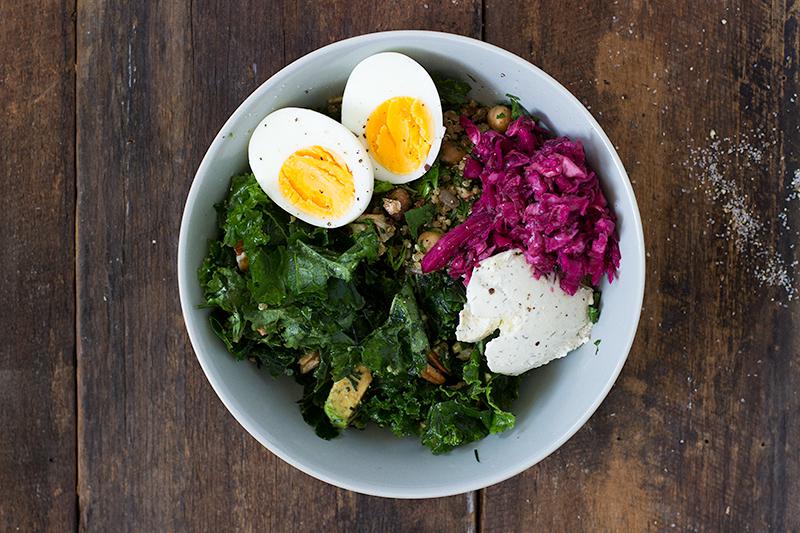
Macro bowls have been around since the 90’s when Gwyneth Paltrow shot them into the limelight. I remember macro bowls being a thing when I was in my late teenage years and early 20’s. Originally they were all about combining your yin and yang macronutrients all in one bowl to create a nourishing meal as part of the ‘macrobiotic diet’. As the years have gone on (and particularly of late with the surge in hipster healthy eating), macro bowls, often termed now ‘buddha bowls’, have been somewhat, to be blunt, bastardised.
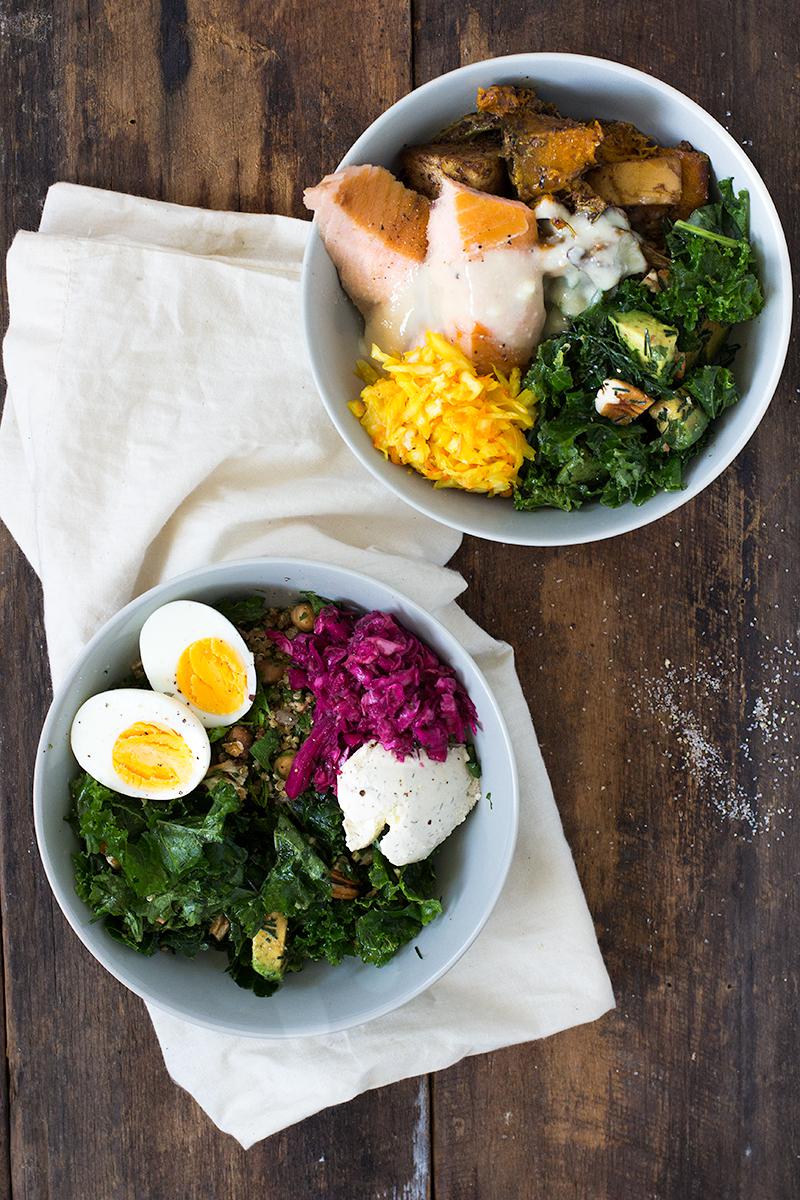
We see these decorative bowls on food blogs and all over social media called macro or buddha bowls yet often they are lacking the very point of what their name denotes. Many that I see on instagram for instance contain some roasted sweet potato with a mix of salad vegetables and perhaps a dollop of tahini to finish. The polite way to approach this is to say it’s a nice start and my oh my does it look pretty, however it’s failing dismally due to the fundamental lack of macronutrients (aka ‘macro’ bowl right? I get that it might look fancy, but what about the 100’s and 1000’s of eyes that scroll past it thinking that is what healthy eating looks like? These are the thoughts that keep a nutritionist awake at night.
The basic formula for putting together a macro bowl is as follows:
- complex carbs’ or starchy carbs: 1/3 – ½ cup of a grain such as brown rice, brown pasta, quinoa, barley, buckwheat, spelt, farrow, bulgur wheat, millet or roasted root vegetables such as potato, sweet potato, pumpkin, parsnip
- low starch green vegetables: approximately 1 – 1 & ½ cups leafy greens or low starch salad vegetables such as baby spinach, kale, bok choy, broccoli, broccolini, garden herbs, rocket. This may also be mixed with some other low starch vegetables like eggplant, celery, beans, cauliflower, capsicum, tomatoes (technically a fruit but whatever), and cucumber for instance. In the winter months it’s nice to have some of these roasted off and warmed up, then in the warmer weather I like it to be more of a fresh salad. You can dress these vegetables with lemon or lime juice, apple cider vinegar, balsamic vinegar or even pesto.
- protein: 1 palm size piece of meat/fish based protein (approx. 80 – 120 grams depending on your needs) or 1 -2 eggs or 1/3 cup of legumes or tofu/tempeh. You can also add canned fish such as tuna, sardines or salmon.
- fats: choose from avocado, nut cheeses, regular cheese, olive oil, coconut oil or other quality oils, nuts and seeds. Generally you want around ¼ cup of fats and these can be a mix of anything you like from above.
- ferments: this is not essential but for me really brings a macro bowl alive! Add fermented vegetables like kimchi or sauerkraut. You could also drizzle with some quality greek yoghurt if dairy tolerant. Its also nice to bring the bowl alive with a squeeze of lemon.
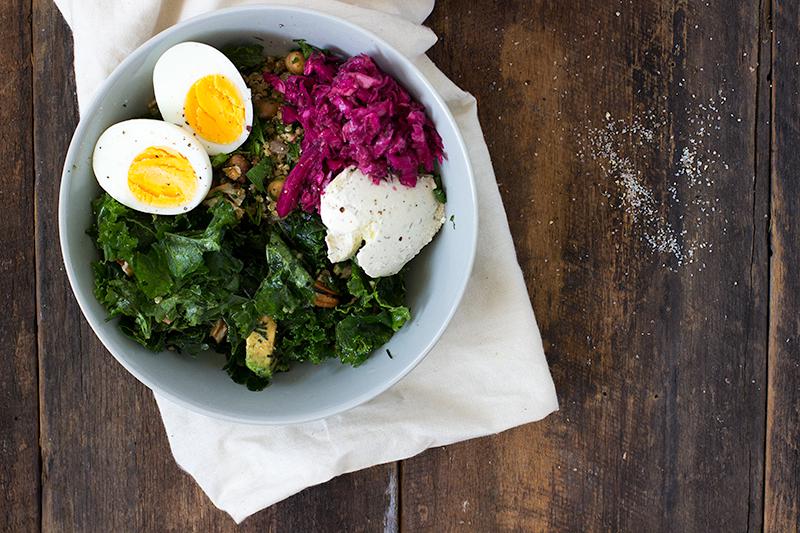
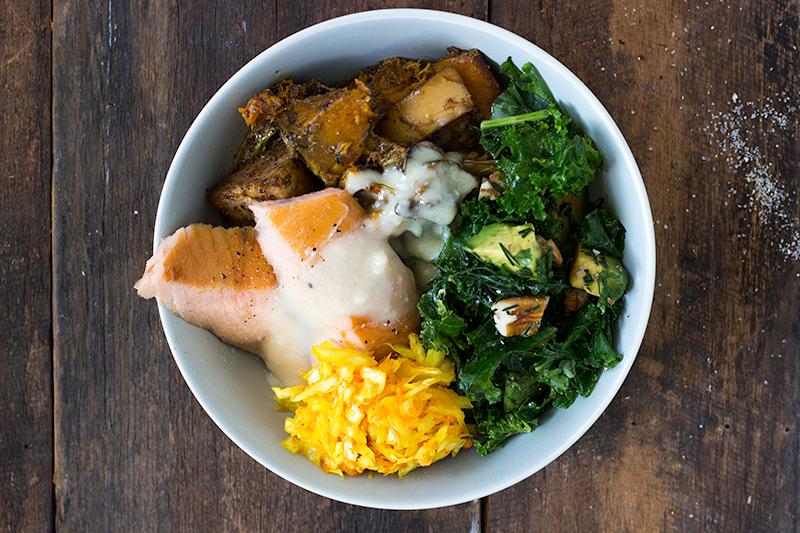
Need personalised nutrition advise catered to your needs?
Contact us at JCN Nutrition Clinic to make an enquiry
Macro bowls can be dead easy to prepare and as quick as you like, or alternatively a more lengthy stylised experience if that floats your boat. The beauty is you can choose. Honestly we live off them at the JCN Clinic and ours are all based around left overs and batch cooking earlier in the week. In fact the bowls made here are entirely made from left overs and batch cooking over the past few days. I literally prepared nothing expect a boiled egg. From batch cooked staples such as roast vegetables, quinoa salad and a kale salad everything here was ready to go.
I must say my notion of batch cooking is really cooking dinner and just cooking extra. Personally it is rare that I batch cook on a weekend. I’m a weekend baker but that’s about it. I get resentful spending too much time cooking dinner even on a Sunday night when all I want to do is watch a movie and drink choc chilli chai. Ask my husband. He was witnessed the ‘I’m not happy about doing this right now’ fury.
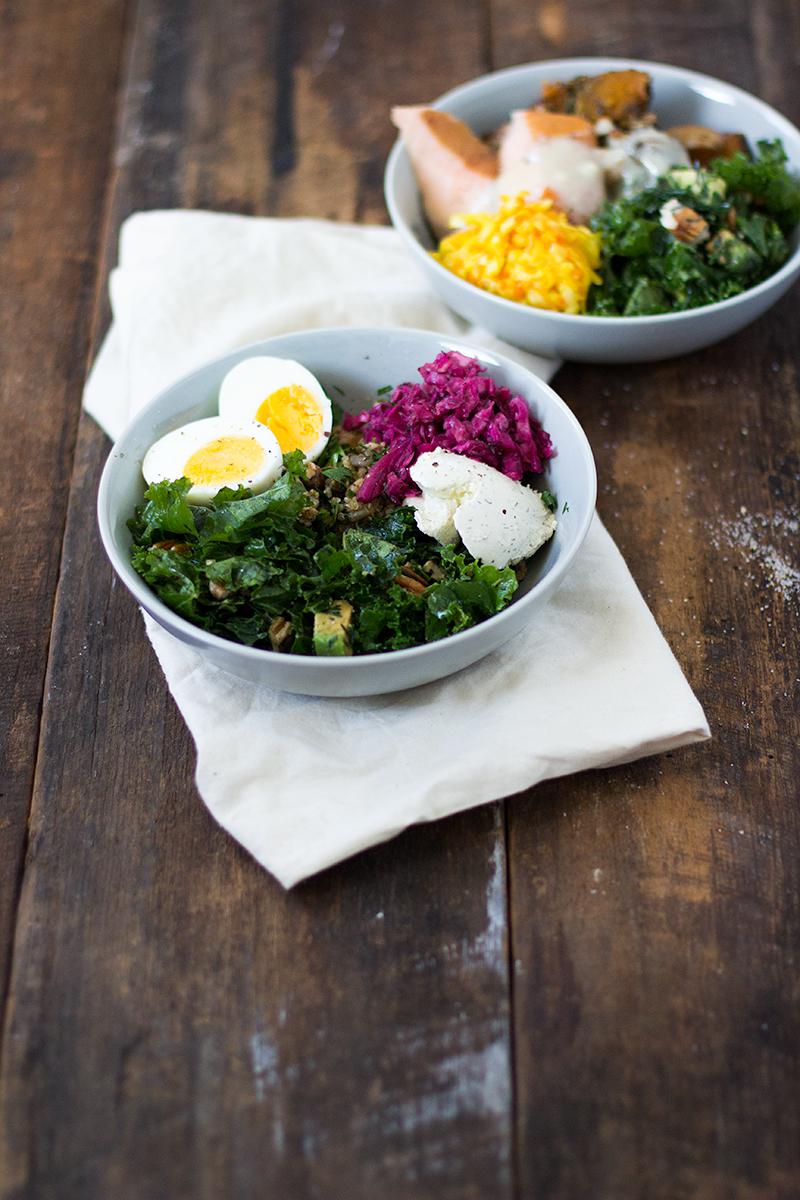
Here I have given you two examples of macro bowls, one vegetarian and one for a meat eater. These are designed to inspire you with flavour combinations. Of course you can make these one exactly and I can confidently say they are delicious, however let them guide you to make up some of your own wonderful macro or buddha bowl combos. xx
how to make a macro bowl {aka buddha bowl}
- serves
- each bowl serves 1
- preparation time
- 5 minutes if everything is ready to go
- cooking time
- generally nil
ingredients
- // bowl one //
- 1/2 cup roasted pumpkin, potato and parsnip with lemon
- 100 grams wood smoked salmon
- 1 cup massage kale salad
- 1 tablespoon macadamia nut butter
- 1 heaped tablespoon kimchi
- // bowl two //
- 1/2 cup roasted cauliflower, chickpea & quinoa salad
- 1 boiled egg
- 1 cup massaged kale salad
- 1 heaped tablespoon cashew cheese
- 1 heaped tablespoon sauerkraut
method
You will find links below to all of the recipes used to batch cook or prepare the components of these two scrump macro bowls.
Bowl 1:
Start by pre-warming your roast vegetables if you prefer. In a low lip bowl place the roasted vegetables, smoked salmon, massage kale salad and then top with the kimchi and macadamia nut butter.
Bowl 2:
Boil up your egg if not already prepared. In a low lip bowl place the roasted cauliflower, chickpea and quinoa salad, massaged kale salad and the egg cut in half. Top with cashew cheese and saurkraut.
nutritional information
- A macro or buddha bowl should always provide a complete mix of adequate protein, carbs and fats whether it is for meat eaters, vegetarians or vegans. This is achievable with all chosen dietary intakes, it’s just about educating yourself on what fits into these macro groups for you.
- Adding fermented vegetables or dairy/alternative dairy products adds ‘wild’ bacteria to our food. Some yogurts display the species in them in the ingredients list whereas krauts and so forth tend to be more of a wild self seeding mix. Generally for most it’s great to expose our microbiome to this diversity of food based bacteria.
Jessica Cox is a qualified practicing Nutritionist with a Bachelor Health Science (Nutrition) and over 15 years of clinical experience. She is the founder and director JCN Clinic, published author and established recipe developer. Jessica is well respected within health and wellness space for her no fad approach and use of evidence-based nutrition.



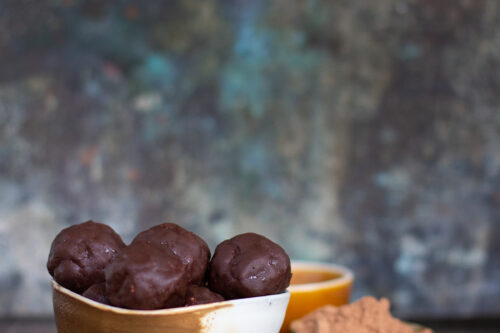

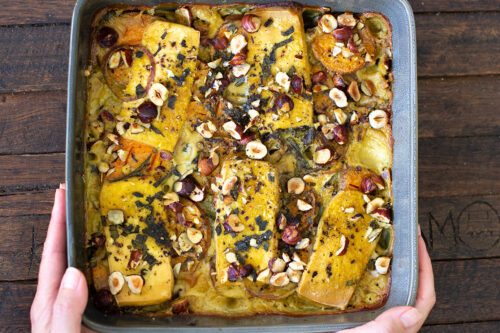
Nice post Jess…. I had no idea that what I’ve been having for lunch for ages and ages has a proper name!
In this day and age everything seems to have a fancy name. 😉